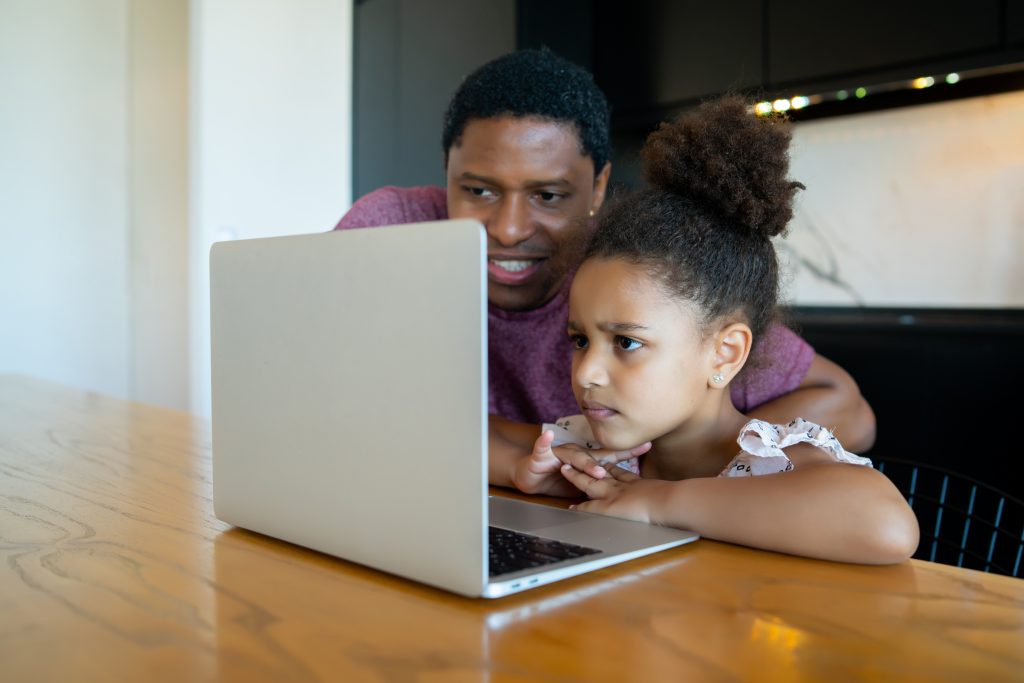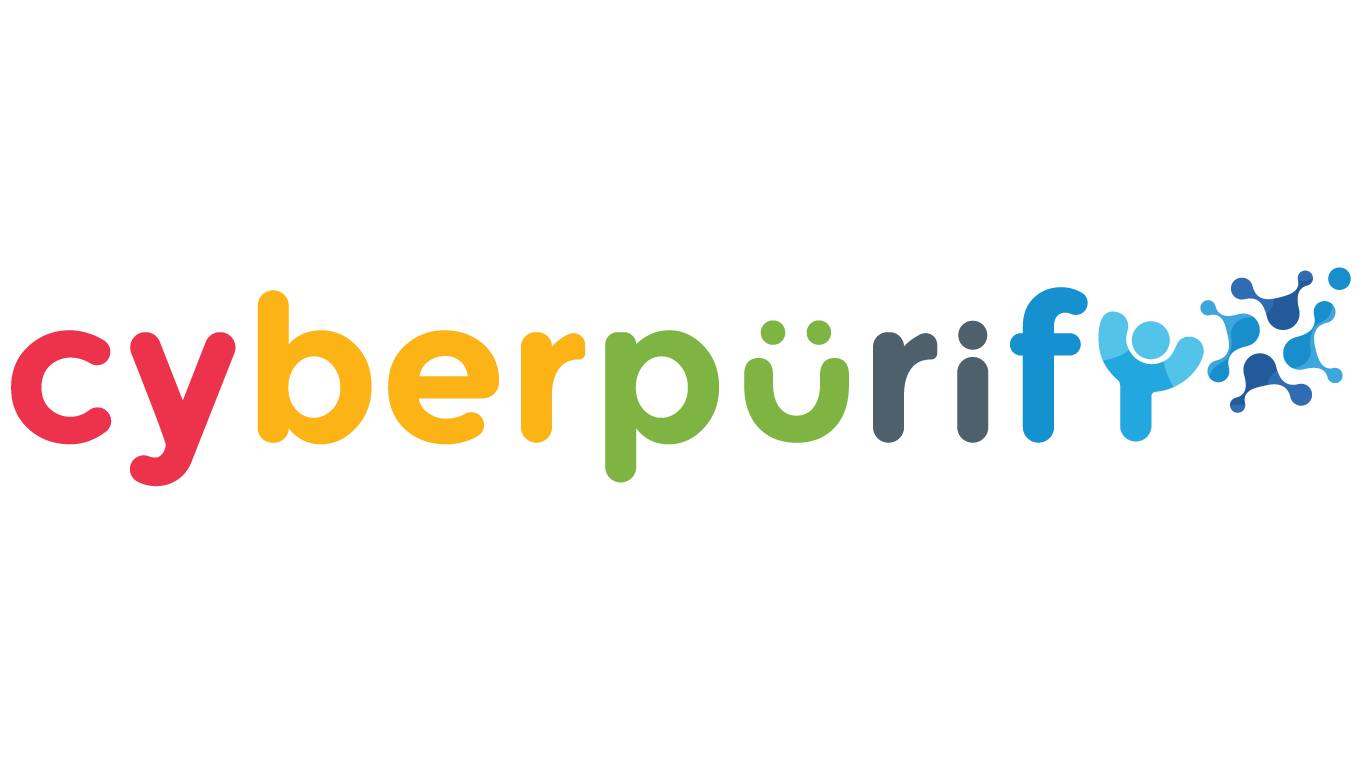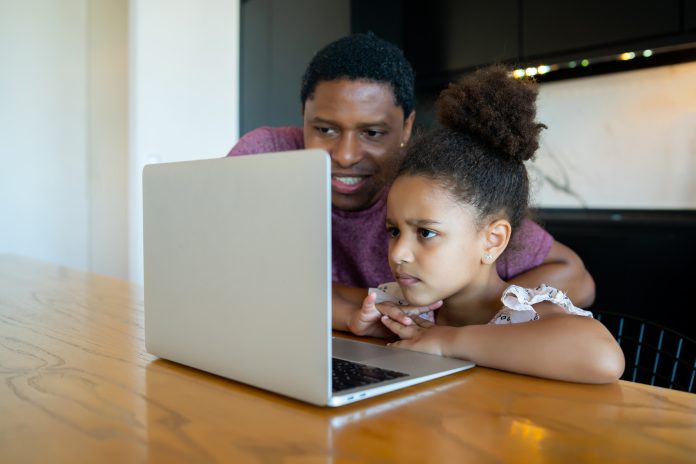Empowerment is your child’s capacity for autonomy and self-determination in the community. With the advent of digital technology and social media, digital empowerment allows your child to participate in a responsible and self-determined way, leading the way for positive change in their community and even the world.
The article below will help you have a more detailed view of Empowerment – a must-have digital skill when teaching social etiquette for children
Empowerment – teaching social etiquette for children
Thoroughly researching the problem
Before you advocate for any issue on social media or online communities, your child needs to do thorough research on the topic.
The more deeply your child understands the issue, the more effectively he or she will be able to communicate, exchange and discuss it, both online and in real life. Researching the issue can also help your child connect with others in the community who are interested in that issue or with others who have relevant decision-making abilities.
While researching, your child may also get to know people who have successfully solved similar problems. From there, they can proactively adapt these solutions to meet their own needs. However, your child also needs to apply the digital interaction skills mentioned in the previous section – verify his or her information before hitting the share or post button.


Some suggested questions to start a conversation with your child about researching the problem:
- What kind of information do you need before you support an issue, an aspect, or a point of view?
- Whom can we contact on this matter (e.g. school board, city council)? Do you think we can find their contact information online?
- How do we know this information comes from a reputable source? You can use the 5 verification questions mentioned in Engagement Skill:
- Where does this information come from?
- Who posted/shared this information?
- When was this information created?
- Where is this information generated?
- What is this information created for?
Understand the tools
Help your child use digital tools actively by knowing what they are and understanding how they can be used to their fullest effect.
For example, memes allow people to use popular culture as a base to spread their own ideas. If your child wants to draw other people’s attention to an issue, he or she can use memes to raise awareness.
Additionally, hashtags are another great digital tool that many children can use to strengthen their online voice. Hashtags # help people organize similar ideas in a search term so they can be found more easily. Your child can also use the hashtag # to search for people, events, and opportunities related to their issue.
Some suggested questions to start a conversation with your child about how to use empowerment tools:
- What issues are you concerned with? How can your child use the internet and social media to help solve them?
- What is your favorite meme? Can they help raise awareness of your child’s problem?
Try and you might love this:
Parents should know how to support their children
Most young people of all ages can be quite interested in solving problems in their community.
However, social media is not an age-appropriate tool for all children. Many social media platforms have age requirements to help protect users like your kids. This does not mean that your child cannot use the Internet to solve his problems. You can use your own online presence to help your child raise awareness of their subject matter.
For example, you can join an online community that focuses on an issue your child is interested in. This will give your child a chance to learn more about the issue, and allow you to preview content and screen potential contacts.


If you’re using social media, you can use your network to promote hashtags, memes, or other content your child has created about their issue. Your involvement gives your child both support and protection as they strive to bring about positive change to the world.
Some suggested questions to start a conversation with your child about advocating for your child’s activity:
- How can you help your child spread the word about your child’s issue online?
- Are there any online groups or communities you can join to learn more about your child’s problem?
- Create (hashtag #, image, meme, etc) that you can share with your friends to help people learn more about your child’s problem.
Actively use technology to better protect children on the Internet


Teaching children digital skills needed to be a responsible citizen in the virtual world, or social manners for kids – Empowerment – giving your child autonomy and self-determination towards a good outcome more beautiful for the community is important.
But to make sure your child is researching in a safe environment, avoiding any exposure to harmful search results and inappropriate content, you should actively take advantage of technology to protect your children more effectively on the Internet such as porn, bloody accidents, murders terrorisms, etc.
You should take advantage of available tools to set up parental controls on your child’s device to filter out harmful content, limit the use of the device, or some other features for children such as no in-app purchases. You may need some useful online safety tips for parents:
- How to set up parental controls on Macbook
- How to block porn sites on Google Chrome
- How to block porn sites on Safari
- Set up parental controls for Microsoft Edge
- Set up parental controls for Youtube
However, with the spread of harmful content (especially porn) calculated by the second, by the minute, the available features of the devices and platforms are absolutely not enough.


Teach social etiquettes for children is important, but to better ensure your child’s online environment is safe and healthier, you should consider using an additional online content filtering tool CyberPurify Kids – considered by many parents as one of the best free parental control software to hide 15 types of harmful content on the Internet, including:
- Pornography
- Horrifying content like gore, accidents, ghosts, violence, murder, terrorism, etc
- Content about stimulants, addictive substances such as alcohol, beer, marijuana, drugs, etc
- Content with aggressive elements, hurting others like Hate speech
This free porn blocker extension can help to minimize your child’s access to harmful content, ensuring a healthy online environment for your child but at the same time, not invading their privacy rights.
You may also find this helpful:















